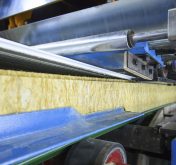
CASE STUDY: How Sparks Provided a Durable, Precise, and Complex Conveyor Belting System for an Industrial Setting
Dura-Drive SPM Pulleys and Heavy Duty White Urethan Belts with Cast Urethane V-guides
Read More
Dura-Drive SPM Pulleys and Heavy Duty White Urethan Belts with Cast Urethane V-guides
Read More
It is not uncommon for companies to stock extra belts in their plant in case of belt failure. No replacement belt is closer than the one you keep in storage. It is very important that these extra belts are stored properly.
Read More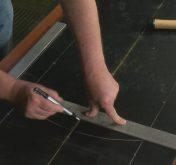
Accurate squaring of the belt ends prior to lacing is essential to correct belt tracking and helps distribute stress evenly throughout the joint.
Read More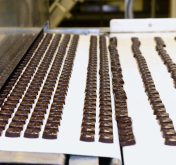
One of the best things you can do for your conveyor belt is to take proper care of it. Doing this will ensure a long life for your belt, lessening downtime and saving you money. Here are 6 simple tips for maintaining your conveyor belt to keep it in top shape.
Read More
Aligning and controlling a belt so it maintains its desired path is often difficult to do. Many factors influence the belt's ability to track correctly.
Read More
Conveyor belt fasteners are manufactured in two styles—hinged and solid plate. Hinged belt fasteners are applied as individual segments to a belt end and then connected with a hinge pin. Solid plate fasteners span opposing belt ends that have been butted together, forming a tight, sift-free splice.
Read More
Training a conveyor belt to run centered on your conveyor requires patience and a strong understanding of how conveyors work. Following this 4-step conveyor belt tracking process will help reduce downtime, extend your belt life, and save money.
Read More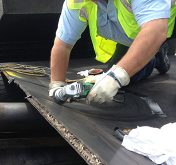
Properly tensioning a conveyor belt is a critical step in tracking conveyor belts. Getting the correct amount of tension reduces splice failures, excessive stretch, and wear on the side of your frame. Luckily, there is a simple procedure to achieve the proper tension on a belt.
Read More
Maintenance personnel and managers need to be in agreement as they consider various factors impacting the timing and necessity of conveyor belt repair.
Read More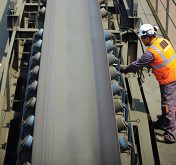
Managers and maintenance personnel need to be on the same page as they weigh the various factors when considering conveyor belt repair.
Read More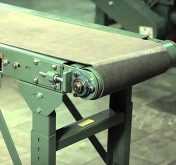
A common challenge for plant maintenance is controlling and aligning a belt so it maintains its desired path. Many factors influence a belt's ability to track correctly.
Read More
Conveyor belts generally break in the middle of demanding production runs when downtime simply isn’t an option. Ordering a new replacement belt at this point is going to cost hours-if not days of additional downtime before you can begin to install it on your conveyor. Luckily, there are a few proven conveyor belt repair practices that will get you up and running faster.
Read More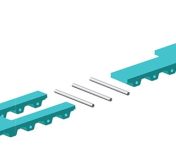
More and more, machine designers are using endless urethane timing belts in place of flat belts in their equipment design for the accurate movement of product. But, changing timing belts on many machines can be very time-consuming. Quite often, the design of these machines does not allow for the replacement of endless belts without significant disassembly of the machinery, causing considerable downtime and lost production.
Read More